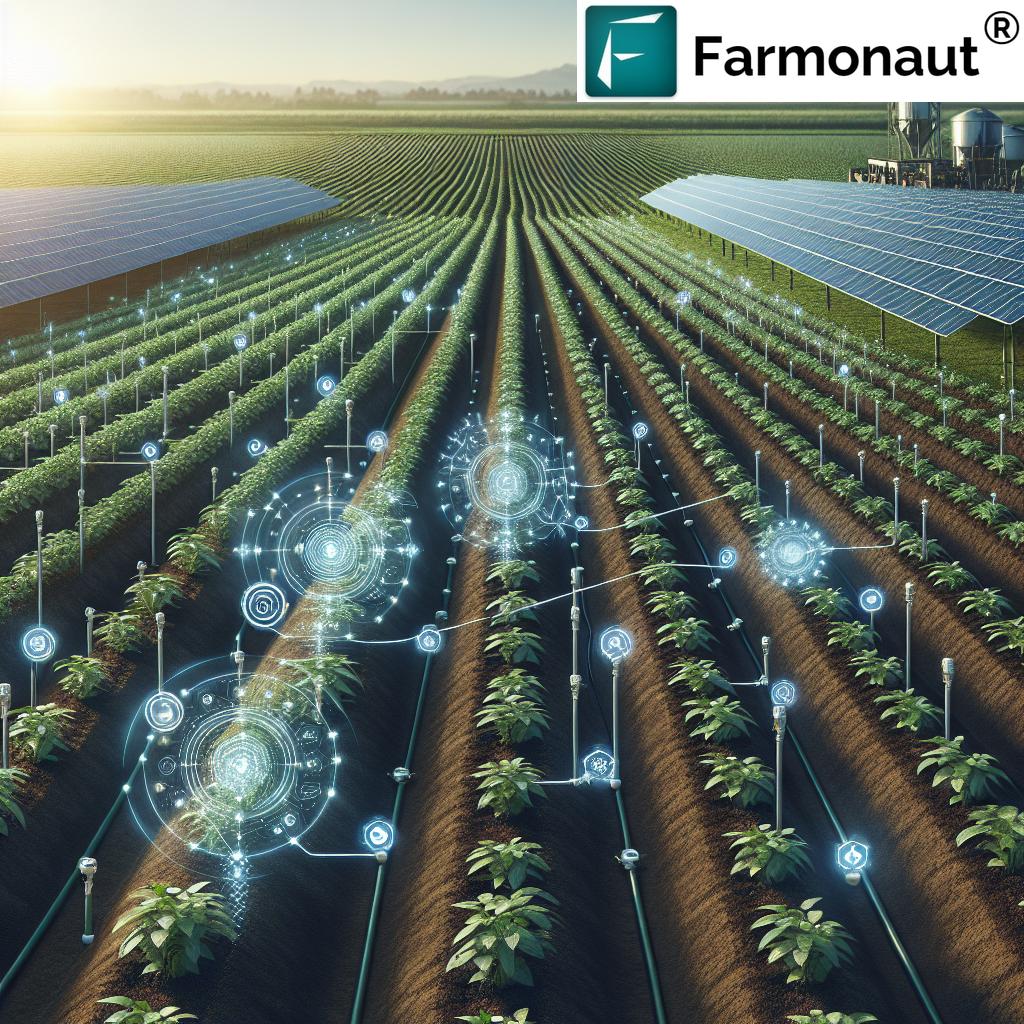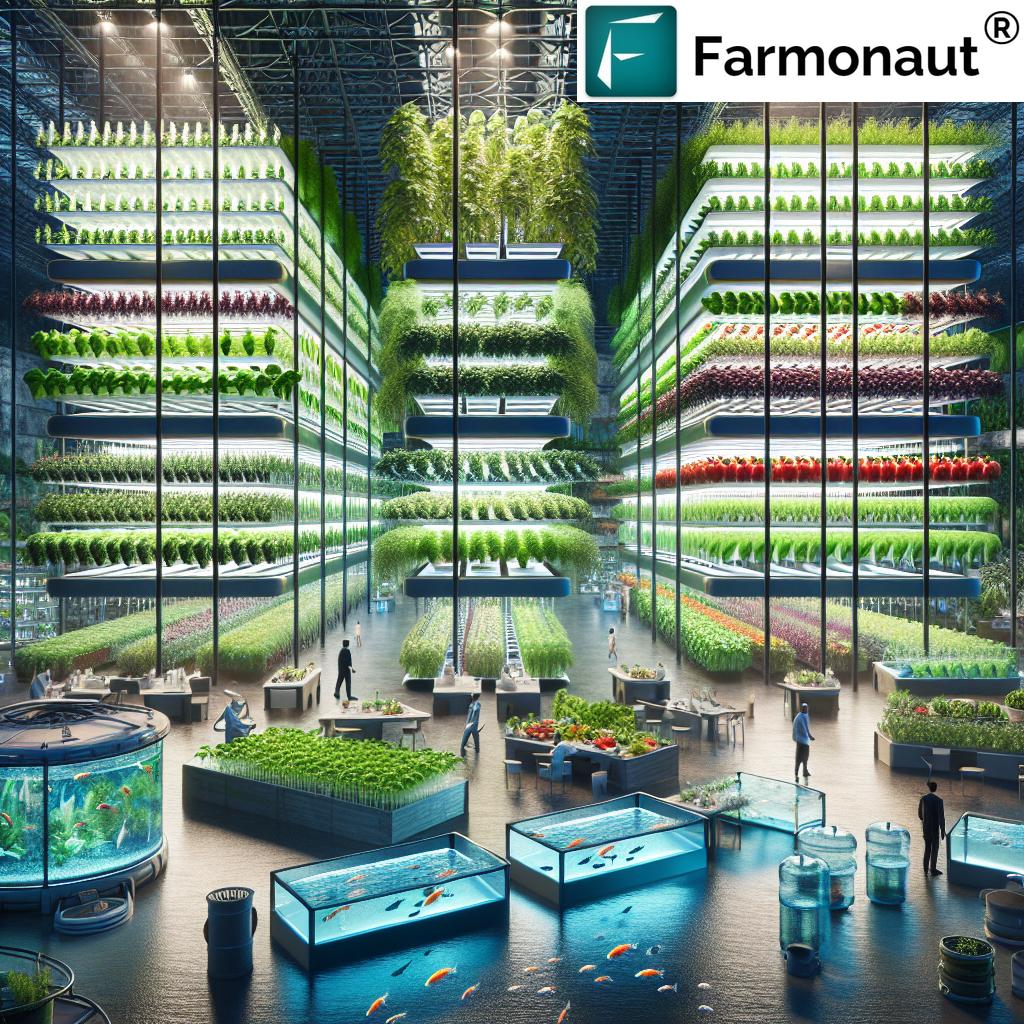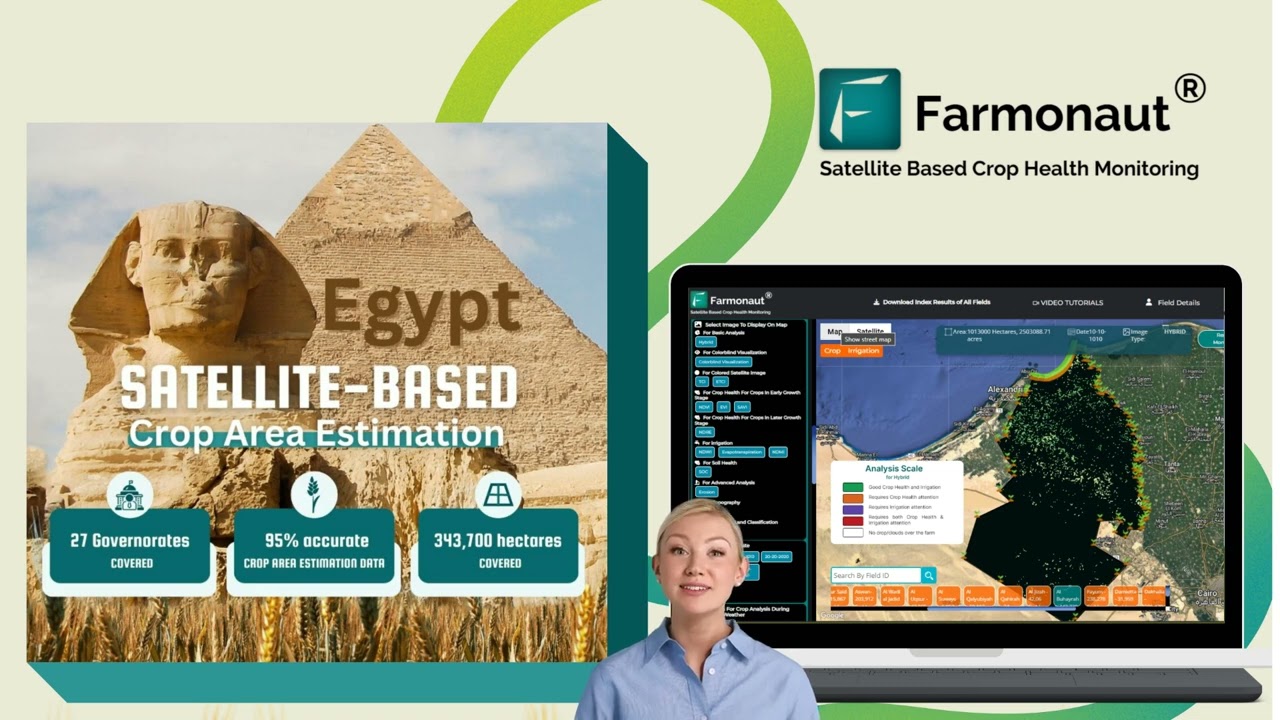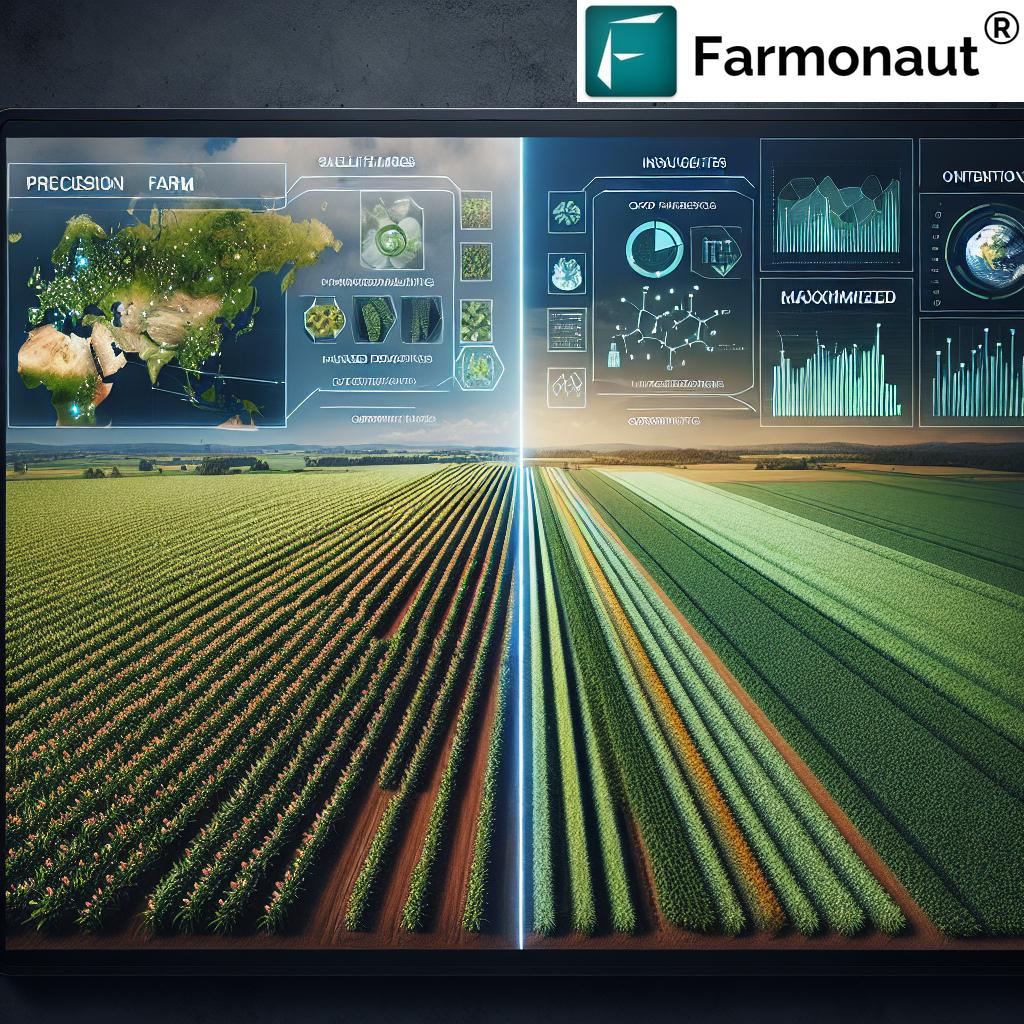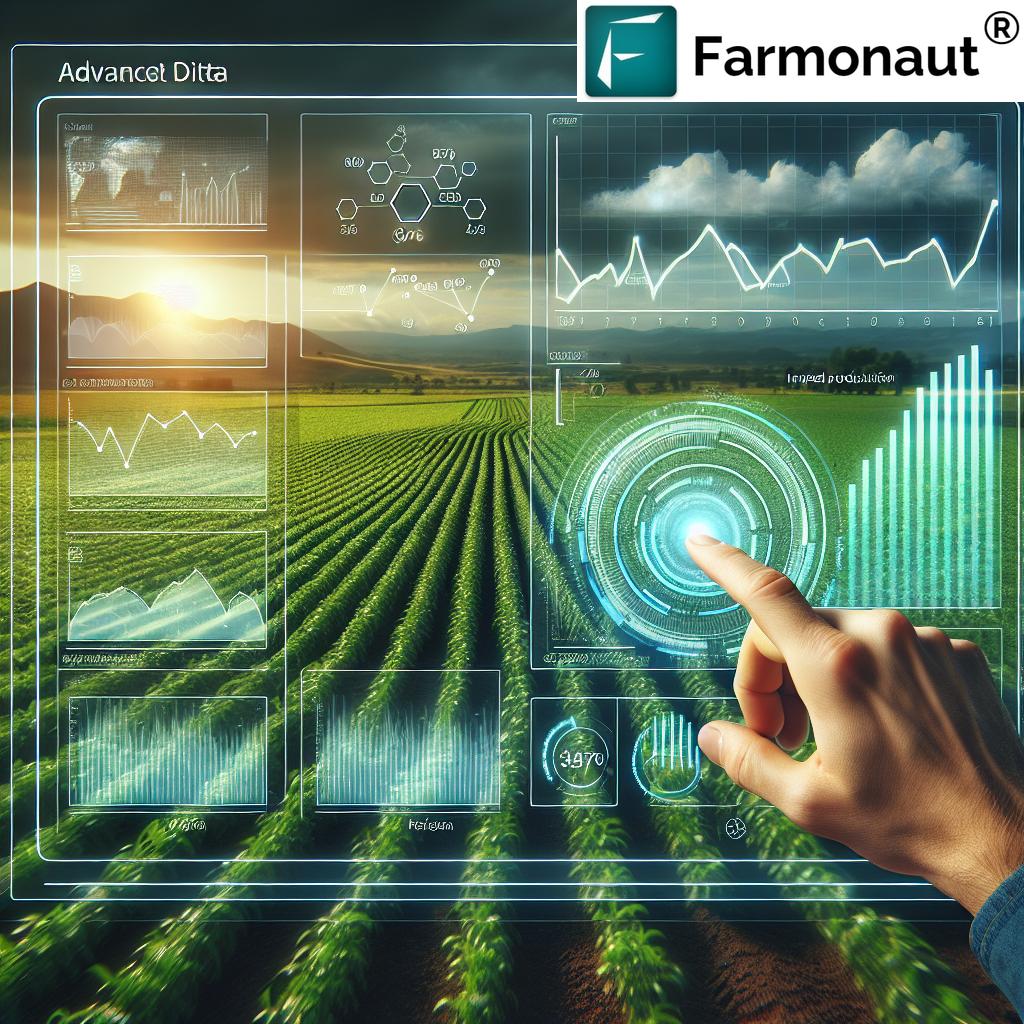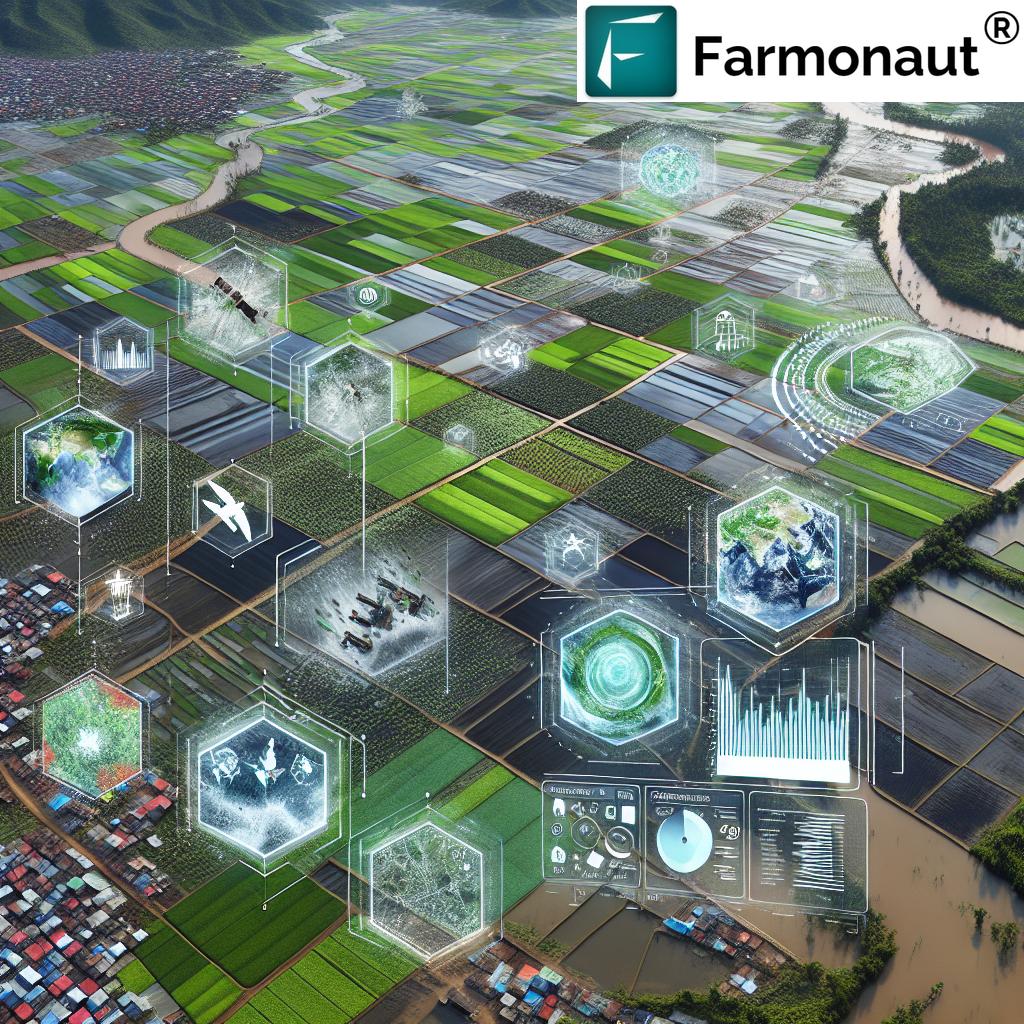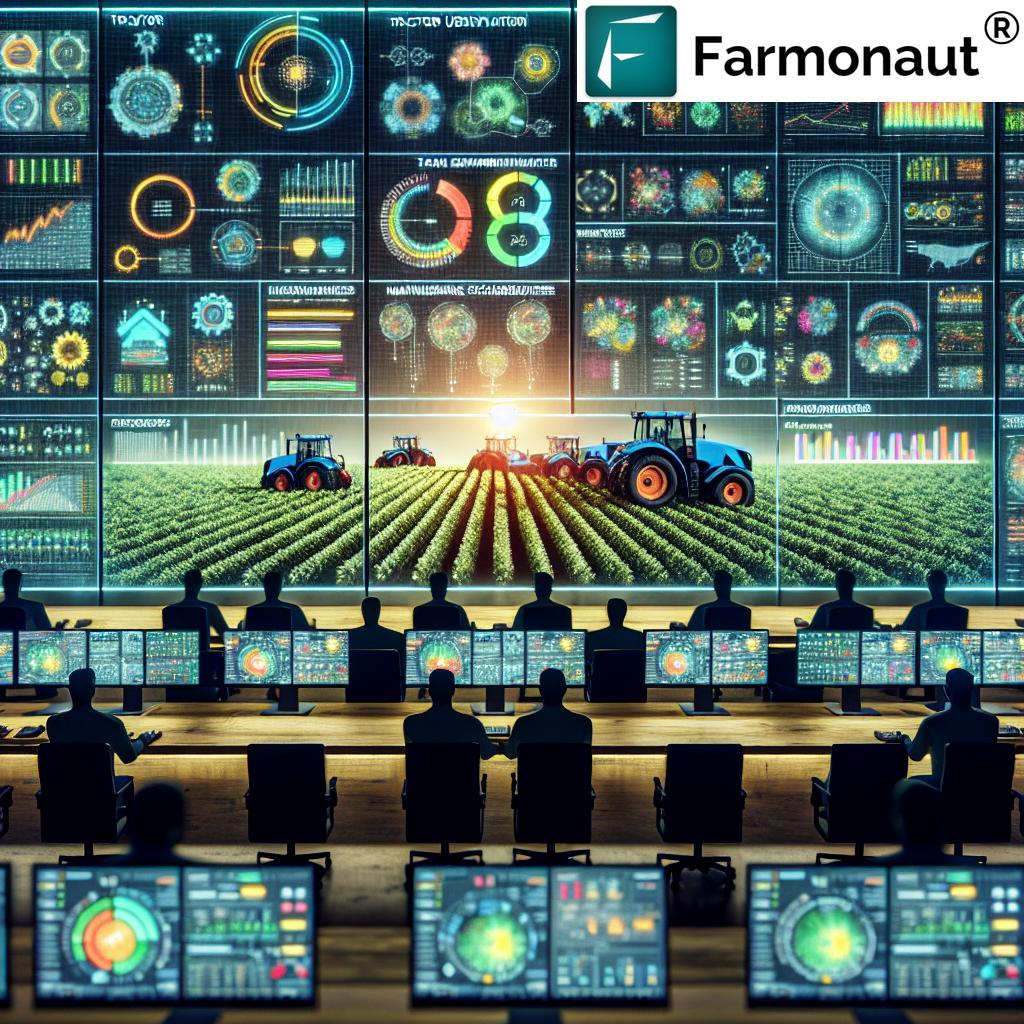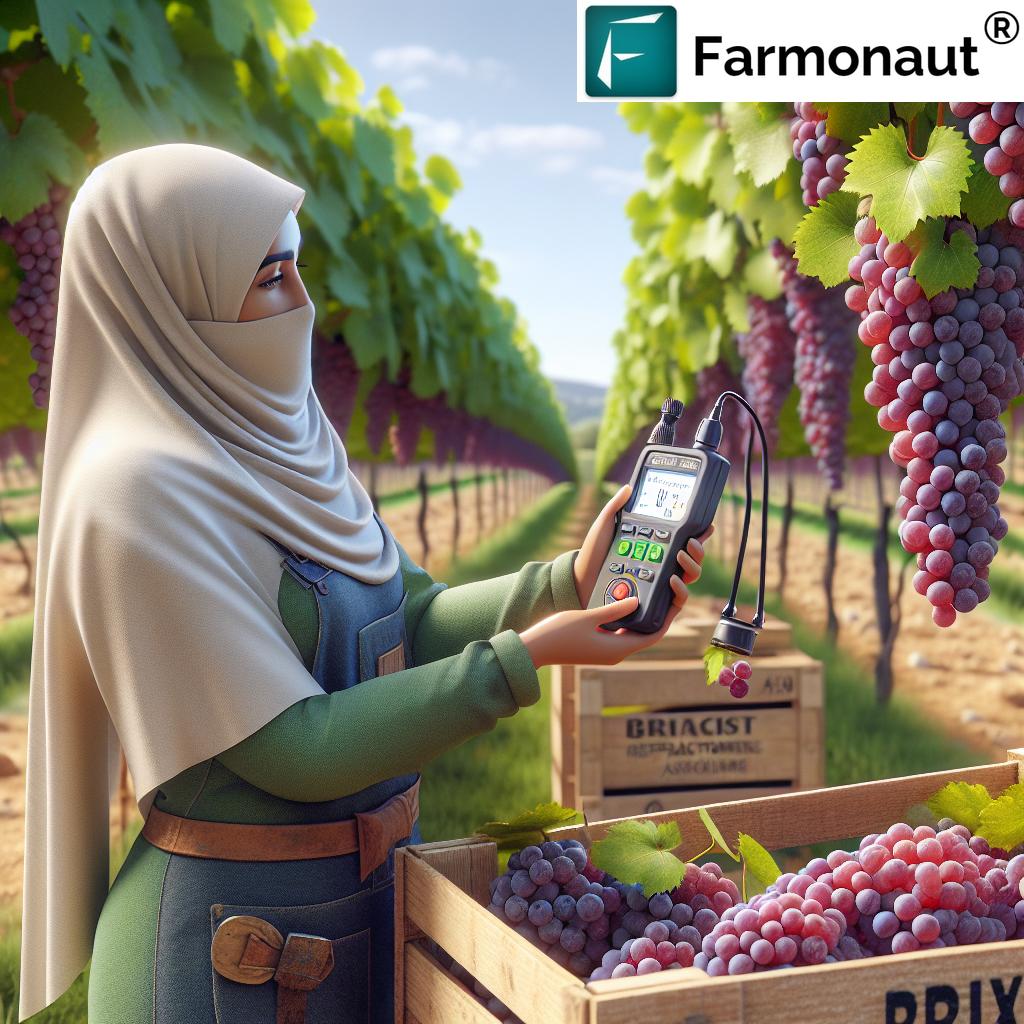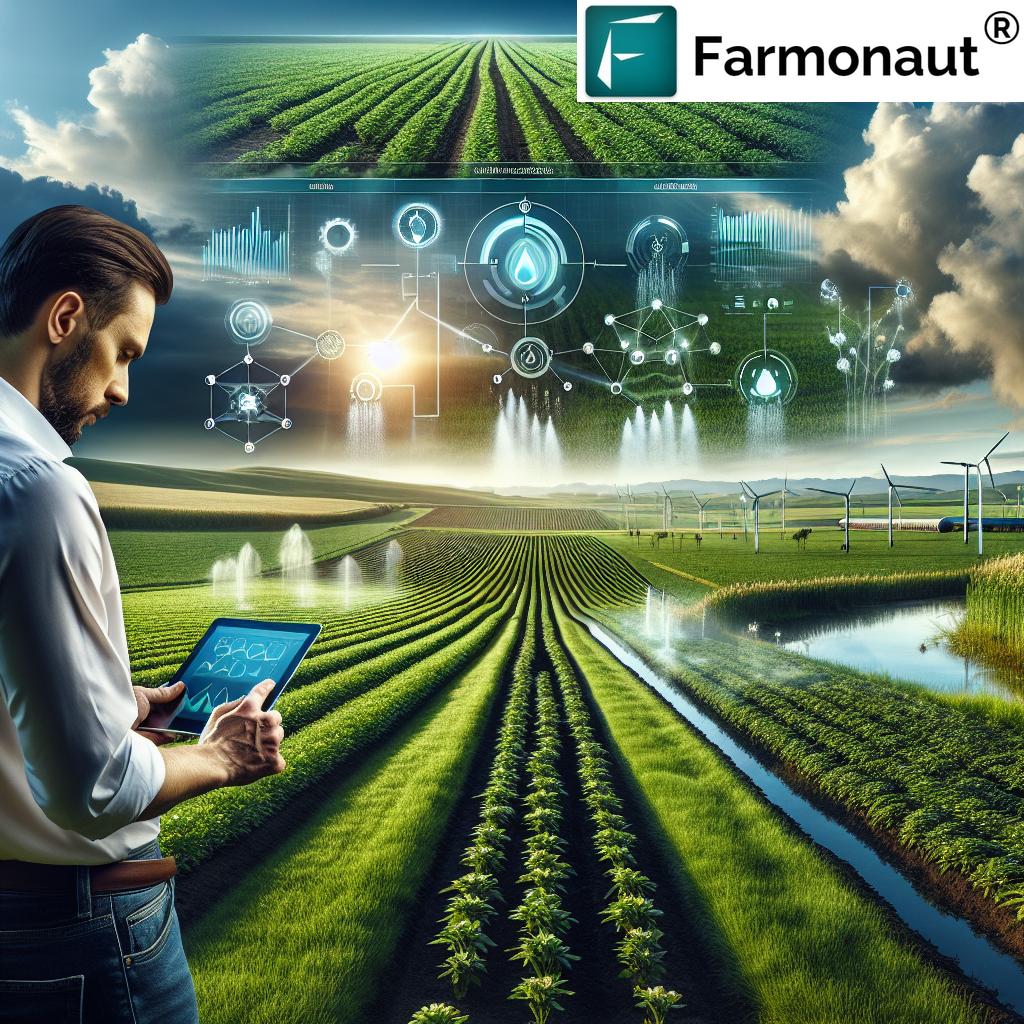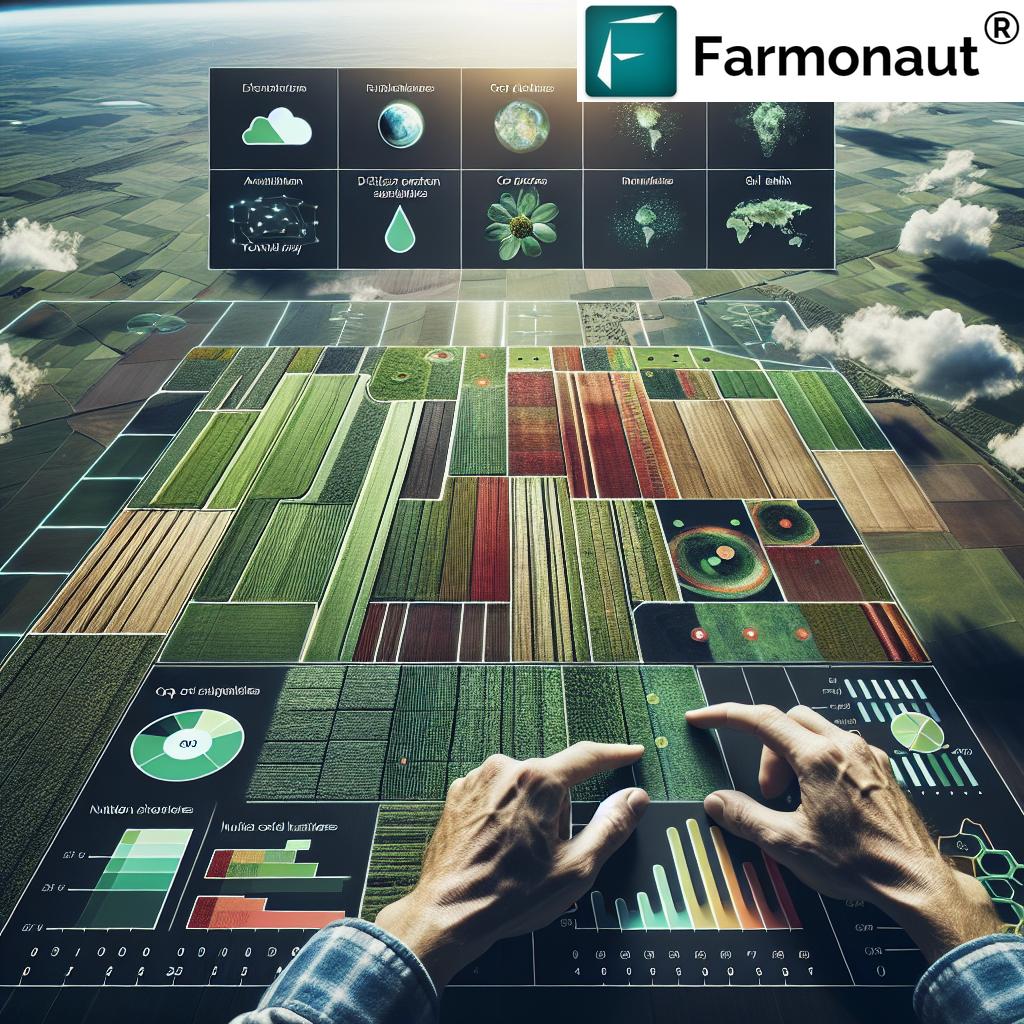7 Game-Changing Solutions for Agriculture You Need!
“Precision agriculture can increase crop yields by up to 20% while reducing input costs by 15% through data-driven decisions.”
Table of Contents
- Introduction
- 1. Precision Agriculture Technology
- 2. Controlled-Environment Agriculture (CEA)
- 3. Agroforestry Solutions
- 4. AI in Agriculture & Machine Learning
- 5. Sustainable Agriculture Practices
- 6. Hydroponics and Aquaponics Systems
- 7. Nanotechnology and Agrivoltaics
- Agricultural Technology Solutions: Comparison Table
- Why Farmonaut is Transforming Modern Farming
- The Role of Policies and Investments in Agricultural Innovation
- Frequently Asked Questions
- Conclusion
Introduction: The New Era of Agricultural Innovation
Agriculture stands at a pivotal juncture. We are witnessing a transformative phase, marked by climate change, resource scarcity, and ever-evolving food security requirements. The traditional methods of farming that once nourished our civilizations now face a spectrum of complex challenges.
Yet, as history has shown, innovation thrives under adversity. Today, a convergence of cutting-edge technology, sustainable agriculture practices, and a focus on resilience is reshaping how we view agriculture. From remote sensors, to advanced AI-driven management tools, to integrated hydroponics and aquaponics systems—modern farming is rising to meet global needs.
In this blog, we unveil the 7 most game-changing solutions for agriculture that you, as part of this global movement, need to know about. Whether you’re a smallholder farmer, an agribusiness owner, a policymaker, or a curious innovator, these solutions are driving the next revolution in food production. And at the forefront of these advancements stands Farmonaut, a pioneer in making precision agriculture accessible, effective, and sustainable.
1. Precision Agriculture Technology: The Vanguard of Efficiency
What is Precision Agriculture?
Precision agriculture is not just a buzzword; it’s a paradigm shift. By utilizing advanced sensors, IoT devices, and remote sensing technology, we can monitor critical factors such as soil moisture, nutrient levels, and temperature with unprecedented accuracy. This robust data forms the backbone of informed, efficient, and sustainable farming practices.
How It Works
- IoT-Enabled Sensors constantly assess soil, water, and plant health.
- Drones equipped with high-resolution cameras conduct aerial surveys, assessing crop health and identifying issues such as diseases, pest infestations, and nutrient deficiencies.
- Autonomous machinery (tractors, harvesters) optimizes tasks like planting, harvesting, and spraying with remarkable operational efficiency.
By integrating these digital systems, we ensure efficient resource use, minimize waste, and enhance yields—all crucial in the face of resource scarcity.
Real-World Application: Farmonaut’s Role in Precision Agriculture
At Farmonaut, we harness the power of satellite-based crop health monitoring to deliver actionable insights for carbon footprinting and large-scale farm management. By leveraging multispectral satellite imagery, we monitor vegetation health (NDVI), soil moisture, and other vital indicators. This enables optimization of irrigation schedules, fertilizer application, and pest control interventions—tools that drive agricultural productivity enhancement and sustainability.
Discover how you can integrate these precision technologies by exploring our Agro-Admin App, which empowers you to manage fields at any scale with real-time data and intuitive interfaces.
SEO Keyword Focus: precision agriculture technology, sustainable agriculture practices, crop management, soil health, crop health monitoring, enhance productivity, climate-resilient farming methods.
2. Controlled-Environment Agriculture (CEA): Growth Beyond Boundaries
Redefining Where and How We Grow
Controlled-Environment Agriculture (CEA) transforms the farming landscape by enabling us to grow crops in highly controlled settings. Whether through sophisticated greenhouses, indoor farms, or vertical farming systems, CEA offers remarkable benefits for urban farming innovations and resource efficiency.
- Hydroponics: Growing plants without soil, using nutrient-rich water solutions.
- Aquaponics: Integrating fish farming with hydroponic plant growth—fish waste provides plant nutrients, and plants purify the water.
These techniques not only reduce the land requirements for agriculture but also minimize water consumption, allowing us to grow crops year-round regardless of external climate conditions. The result? Sustainable, local food production, and enhanced food security for urban communities.
Benefits of Vertical Farming and CEA
- Maximized production in limited urban areas
- Drastic reduction of agrochemical runoff
- Improved resource management and minimized waste
- Ability to monitor and control temperature, humidity, and nutrient levels
At Farmonaut, we recognize that crop plantation and forest advisory solutions are becoming central to the design of sustainable cities and rural economies alike. With the right data and management tools, farmers of any scale can succeed in CEA environments.
SEO Keyword Focus: controlled-environment agriculture, hydroponics systems, vertical farming, urban farming, crop management, food production, resource efficiency, sustainability.
3. Agroforestry Solutions: Harmonizing Food, Timber, and Ecology
Why Integrate Trees with Crops?
Agroforestry solutions are transforming our approach to land management by integrating trees and shrubs with crop or livestock systems. This fusion promotes biodiversity, strengthens ecosystem resilience, and creates additional income sources such as timber and fruit.
- Enhanced Soil Health: Trees contribute organic matter, reduce soil erosion, and enrich the soil with nutrients.
- Biodiversity Boost: Supporting a wider web of flora and fauna, reducing vulnerability to pests and diseases.
- Financial Sustainability: By diversifying outputs (crops, timber, fruit, forage), farmers reduce financial risk while contributing to environmental health.
Agroforestry’s Global Impact
Agroforestry aligns with climate-resilient farming methods by providing natural windbreaks, sequestering carbon, and enhancing the stability of yields despite climate fluctuations. It’s central to both sustainable agriculture and forestry goals—making it a crucial solution for global food and environmental security.
With Farmonaut’s actionable insights, we aid in designing and managing mixed-use agroforestry landscapes through carbon footprinting analytics. This ensures informed decision-making and quantifiable environmental benefits for smallholder and large-scale producers.
SEO Keyword Focus: agroforestry solutions, soil health, biodiversity, agroforestry management, resilience, sustainable forestry, ecological stewardship, environmental health.
4. AI in Agriculture & Machine Learning: Transforming Data into Action
Embracing the Future of Farming
Artificial intelligence (AI) and machine learning are rapidly redefining precision agriculture technology. By analyzing massive datasets, these systems predict crop yields, detect diseases, and recommend optimal practices—well before issues arise.
- Disease & Pest Detection: Image recognition from drones and satellites identifies potential outbreaks early.
- Yield Forecasting: Modeling factors such as weather, soil nutrient levels, and plant health to optimize harvest timing.
- Operational Guidance: Dynamic resource allocation (irrigation, fertilizer application) based on predictive analytics.
Farmonaut’s Jeevn AI Advisory System stands as a testament to these advancements, offering real-time, personalized advisory to farmers using satellite data and predictive models. By leveraging technologies like blockchain-based product traceability, we further ensure supply chain transparency and trust.
Farming Powered by Intelligence
Farmers across all scales can now utilize AI-powered tools to streamline daily activities—making data-driven decisions for yield enhancement, resource conservation, and sustainable agriculture. This is the era of agritech and digital farming.
SEO Keyword Focus: AI in agriculture, machine learning, predictive analytics, yield optimization, disease detection, agriculture technology, digital farming, blockchain traceability.
5. Sustainable Agriculture Practices: Building Environmental Resilience
Embracing sustainable practices is crucial for the long-term viability of modern agriculture. Traditional approaches often focused on maximizing yields but neglected consequences such as soil degradation, water wastage, and environmental impacts.
Today, sustainable agriculture practices are central to minimizing risk and maximizing land productivity.
“Sustainable farming practices have helped reduce water usage in agriculture by nearly 30% in the last decade.”
- No-till Farming: Reduces both soil erosion and labor requirements.
- Cover Cropping: Keeps soil protected, reduces nutrient runoff, and improves soil structure.
- Nutrient Management Plans: Optimize use of fertilizers, tailoring applications to actual crop needs.
- Efficient Irrigation Schedules: Ensure crops get precise amounts of water, reducing waste.
By adopting these strategies, farmers make their systems more climate-resilient and adaptable to unexpected challenges. We, at Farmonaut, deliver satellite-based verification for crop loans and insurance, helping ensure these vital practices are verified and supported for policy and subsidy distribution.
Our platform empowers farmers to both monitor and document their adoption of sustainable methods, demonstrating clear benefits for long-term soil health, water efficiency, and environmental stewardship.
SEO Keyword Focus: sustainable agriculture practices, resilient farming methods, soil health, water efficiency, nutrient management, sustainable farming, environmental health.
6. Hydroponics and Aquaponics Systems: Closed-Loop Innovation
The Power of Soilless Farming and Urban Solutions
As urban populations soar and arable land shrinks, hydroponics and aquaponics systems offer innovative methods for sustainable food production. These closed-loop systems use circulating water to deliver nutrients directly to plant roots—no soil required.
- Hydroponics: Offers controlled nutrient delivery; uses only a fraction of water required by traditional agriculture.
- Aquaponics: Pairs fish farming with plant cultivation; fish waste organically fertilizes plants, and plants purify the water.
This urban farming innovation not only addresses space and water scarcity but also enables year-round crop cultivation. The symbiotic system supports both plant health and fish well-being—key for urban food security.
These methods are well-suited for cities and semi-urban zones, reshaping how we think about local food production and sustainability. For those managing urban or peri-urban farms, Farmonaut’s real-time analytics enable decisive, optimized farming—even for non-traditional systems!
SEO Keyword Focus: hydroponics and aquaponics systems, urban farming innovations, closed-loop agriculture, water conservation, urban agriculture, fish and plant system.
7. Nanotechnology & Agrivoltaics: The Next Frontier in Smart Farming
Nanotechnology for Precision & Sustainability
Through nanotechnology, we are able to introduce nanosensors directly into soil and water systems. These sensors monitor pH, contaminants, moisture, and nutrient fluctuations at a molecular level, empowering farmers with real-time data for targeted action.
- Early disease detection
- Immediate identification of nutrient deficiencies
- Reduced fertilizer waste and environmental pollution
Agrivoltaics: Integrating Solar with Agriculture
Agrivoltaics offers a remarkable dual-use approach—the integration of solar panels on agricultural land. This not only generates renewable energy but also provides crop-shading benefits:
- Reduces crop heat stress and water loss
- Optimizes land-use efficiency by producing both food and power
- Supports sustainable energy production and rural electrification
We, at Farmonaut, help track and manage the performance of such systems—bridging the gap between precision agriculture and renewable energy solutions.
SEO Keyword Focus: nanotechnology in agriculture, nanosensors, agrivoltaics, solar panels, dual land use, renewable energy, precision monitoring, sustainable farming solutions.
Agricultural Technology Solutions: Comparison Table
Why Farmonaut is Transforming Modern Farming
We believe every farm, whether small or large, can benefit from data-driven innovation. Here’s how Farmonaut empowers farmers, agribusinesses, and governments to overcome challenges and seize emerging opportunities:
- Cost-Effective Precision: Our subscription-based platform leverages satellite imagery for carbon footprinting and fleet management, making precision agriculture accessible—no expensive hardware needed.
- Scalable Farm Management: From individual plots to transnational agribusinesses, our modular system allows for tailored, scalable solutions.
- Transparency & Trust: With blockchain traceability, food and textile supply chains gain verifiable, fraud-resistant transparency.
- Financial Empowerment: By offering satellite-based verification for loans and insurance, we help farmers secure essential financing swiftly and reliably.
- Environmental Leadership: With real-time carbon footprint tracking and sustainability analytics, our platform champions global environmental stewardship.
- Developer-Friendly APIs: API access and comprehensive developer docs enable integration and innovation across the wider agritech ecosystem.
The Role of Policies and Investments in Agricultural Innovation
To put these innovative solutions into practice on a global scale, transformative policies and investment in agriculture are essential. International organizations advocate for:
- Increased funding for climate-resilient agriculture.
- Supportive regulations for innovative food systems and plant-based diets.
- Restoration of landscapes via agroforestry and reforestation initiatives.
Our role is to continue providing the evidence and tools for farmers and stakeholders to make these shifts with certainty, accountability, and financial security. With governments and financial institutions leveraging satellite-based data for crop loan and insurance verification and subsidy distribution, the adoption of advanced, sustainable, and technological agricultural solutions is accelerating.
Frequently Asked Questions (FAQ)
What is precision agriculture and how does it optimize farming?
Precision agriculture uses advanced technology (sensors, drones, AI) to monitor crop health, soil conditions, and resource usage. This enables timely, targeted interventions—like adjusted irrigation or fertilizer application—resulting in higher yields, reduced costs, and improved sustainability.
How do hydroponics and aquaponics improve agricultural productivity?
Hydroponics delivers nutrients straight to plant roots in water, drastically reducing land and water use. Aquaponics adds fish to this system—fish waste fertilizes the plants, while plants filter the water, creating efficient, sustainable, closed-loop food production suitable for urban farming.
Can smallholders afford to use Farmonaut’s solutions?
Absolutely. Farmonaut’s cost-effective, subscription-based approach is designed to democratize access to precision agriculture technology for farms of all sizes, including individual smallholders—making advanced satellite monitoring available without large upfront investments.
What is the main environmental impact of adopting sustainable agriculture practices?
Sustainable practices—such as no-till farming, cover cropping, and efficient irrigation—reduce greenhouse gas emissions, prevent soil erosion, save water, and improve soil and ecosystem health, foundational for resilient food systems and long-term climate adaptation.
How does AI in agriculture help address climate and resource challenges?
Through predictive analytics, AI tools anticipate weather patterns, detect crop stress or disease early, and guide optimal resource allocation, helping farmers avoid losses, conserve inputs, and adapt to climate variability quickly and effectively.
Is Farmonaut’s technology easy to integrate into existing farm operations?
Yes. Farmonaut provides intuitive mobile and web applications, plus APIs for developers—making it simple for farmers and agribusinesses to integrate data-driven decision support tools into their daily workflows.
Conclusion: A Sustainable, Resilient, and Innovative Future for Agriculture
As we face global agricultural challenges—climate change, resource scarcity, and food security needs—innovative solutions like precision agriculture technology, controlled-environment agriculture, AI-powered analytics, and sustainable agriculture practices are reshaping our future.
At Farmonaut, our mission is to empower farmers and stakeholders worldwide with accessible, actionable, and data-driven insights. By embracing digital transformation, integrating sustainability at every step, and leveraging modern agritech solutions, we set the stage for a productive, resilient, and environmentally conscious agricultural era.
Join us in revolutionizing farming for the next generation—discover more with our advanced farm management solutions and explore our API and developer documentation for integrating smart farming insights into your operations.





